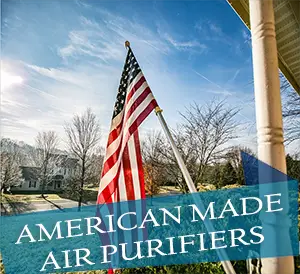
If you are new to cleaning indoor air, you might be wondering about how to use air purifiers. We care about your indoor air quality and that’s why we’ve written this article just for you.
Air purifiers are devices that have simple mechanisms so that you, as the end-user, won’t have problems with setting it up. It’s just like using an electric fan or A/C unit but the difference is what it’s made for – cleaning indoor air from pollutants and allergens.
Learning how to use an air purifier is also a way on how to get the dust out of the air. It is designed to filter out dust and debris from the air using its internal filters. All you need to do is to tweak a couple of settings on the remote or panel and you’re good to go.

What is the best way to use an air purifier?
An air purifier’s ability to clean the air can be maximized further when you do the following:
- Keep it on as long as you need it. We’ll never know when dust and allergens strike so it’s best to keep it constantly running. Most air purifiers in the market have an automatic fan speed adjuster thanks to its sensor. In this way, you can sleep at night without worrying about lowering down the speed or noise level to avoid disruption while also cleaning the air and keeping it that way.
- Seal the windows and doors around the room and/or house. Much like how you’d use an air conditioner, air purifiers need to be operated in a sealed room or house for air to circulate only within the effective area. This allows the air purifier to easily clean the air – and more efficiently.
- Change the filters regularly. When you check your filters from time to time, your air purifier will work more efficiently. An unclean filter will only harbor allergens that will fly back to the air, so it’s important to change it frequently – or at least clean it. Most air purifiers have a filter check indicator to guide you.
- Pick a good spot for your air purifier. Consider a place with unobstructed air circulation so it will filter out air as it passes around your room. Also, it’s good to place it in an area where allergens and dust are more likely to settle or circulate. In this way, you aren’t making your air purifier suffer badly and it will filter the dust and debris more efficiently around your room or house area.
How long does it take for an air purifier to work?
The average time an air purifier will work is around 30 minutes to 2 hours. However, this can vary depending on the following factors:
- The size of your room. A bigger room needs an air purifier that is rated for its size so make sure you choose the right unit for your needs. Most air purifiers in the market can have a coverage area of 100 to 300 square feet but there are also much more powerful units capable of bigger spaces up to 800 square feet or more.
- Fan speed. Most air purifiers have a fan speed of 1 to 3, but some have up to 4. Usually, fan speeds can be switched manually but other units have an automatic sensor that adjusts to the surrounding air depending on the quality. If you keep the air purifier at a low speed, it won’t be as effective as putting it on a higher speed. However, lower speeds are more advisable when you’re sleeping at night (or when the babies are napping).
- Filter system. Look for HEPA and True HEPA filters if you want the best air cleaning quality – these filters are common in today’s air purifiers. However, there are also H13 True HEPA air purifier filters, which are more applicable for delicate setups, such as in hospitals, clinics, nurseries, and if you live with people who have terrible respiratory problems. A better filter system will result in faster air cleaning.
- Level of pollution in your area. Sometimes, even with a powerful air purifier at hand, if you live in a city where pollution is terrible, it will take a while before the unit can clean the air completely. You just have to be patient.
When should you use an air purifier?
An air purifier is best used when you are experiencing the following situations or problems:
| Excessive household dust | The number one use of an air purifier is to filter out household dust, which can cause sneezes, allergic rhinitis, asthma, and other respiratory problems in the future. It captures dust using its HEPA filters. |
| Pet smells and dander | If you are looking for a way on how to get the dog smell out of your house, air purifiers are a great solution for you. That’s because most of them have activated charcoal or carbon filters that suck up the bad smells that come from your pet, especially if they lounge around the sofa.
Likewise, air purifiers also absorb pet dander – one of the leading causes of allergies like hay fever, as well as asthma. |
| Sanitizing hospitals | This is why you’ll easily find an air purifier used in hospitals in the market. Just look for the H13 True HEPA filter and that’s already a medical-grade type that you can use for sanitizing clinics, hospitals, and the like. |
| Allergies and asthma | As mentioned above, dust caused by pollution are threats to people with allergies and asthma, that’s why an air purifier is designed to take them out. |
| Cooking odors | If you often cook food, chances are, your kitchen will smell bad. Air purifiers have a carbon filter that will neutralize bad odors, especially fried food or leftovers. |
| Tobacco smoke | People smoking in the house or even nearby can’t be helped – air purifiers can also remove that tobacco smell using their activated carbon filter. |
Conclusion
To wrap it up, using air purifiers is an easy task because of today’s technology allowing you to set it up at your own pace. Most of them even have automatic controls so you never have to worry about leaving it on for hours, especially during sleep. We hope you liked our informative article about how to use air purifiers!



